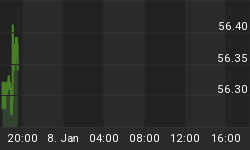With the 10th anniversary of the Lehman Brothers bankruptcy having just passed and the recent stock market drop, the fear of a new financial crisis is palpable.
And those fears are justified. The question is not whether there will be a crisis, but when? In the past 50 years, we have seen more than eight global crises and many more local ones, so the likelihood of another one is quite high. Not just because of the years passed since the 2007 crisis, but because the factors that typically lead to a global crisis are all lining up.
What Leads to a Financial Crisis?
There are primarily three factors.
First, demand-side policies that lead investors and citizens to believe that there is no risk. Complacency and excess risk-taking cannot happen without the existence of a widespread belief that there is a safety net, a government or central bank cushion that will support risky assets. Terms like “search for yield” and “financial repression” come precisely from artificial demand signals created from monetary and political forces.
Second, excessive risk-taking in assets that are perceived as risk-free or bullet-proof. It is impossible to build a bubble on an asset where investors and companies see an extraordinary risk. It must happen under the belief that there is no risk attached to rising valuations because “this time is different,” “fundamentals have changed” or “there is a new paradigm,” sentences we have all heard more times than we should in the past years. Related: China Ready For Trade Negotiations
And the third factor, the realization that this time is different. Bubbles do not burst because of one catalyst, as we are taught to believe. The 2007–2008 crisis did not start because of Lehman; it was just a symptom of a much wider problem that had started to cause small bursts months before—excess leverage to a growth cycle that fails to materialize as the consensus expected.
What Are Immediate Triggers of the Next Financial Crisis?
Sovereign debt. The riskiest asset today is sovereign bonds at abnormally low yields, compressed by central bank policies. With $6.5 trillion in negative-yielding bonds, the nominal and real losses in pension funds will likely be added to the losses in other asset classes.
The incorrect perception of liquidity and value at risk. Years of high asset correlation and synchronized bubble spearheaded by sovereign debt have led investors to believe that there is always a massive amount of liquidity waiting to buy the dips to catch the rally.
This is simply a myth. That “massive liquidity” is just leverage, and when margin calls and losses start to appear in different areas—emerging markets, European equities, U.S. tech stocks—the liquidity that most investors count on to continue to fuel the rally simply vanishes. Why? Because value at risk is also incorrectly calculated.
When assets reach an abnormal level of correlation and volatility is dampened due to massive central bank asset purchases, the analysis of risk and probable losses is simply ineffective. When markets fall, they fall in tandem, as we are seeing lately. The historical analysis of losses is contaminated by the massive impact of monetary policy actions in those years. When the biggest driver of asset price inflation—central banks—starts to unwind or simply becomes part of the expected liquidity—like in Japan—the placebo effect of monetary policy on risky assets vanishes and losses pile up.
The fallacy of synchronized growth triggered the beginning of what could lead to the next recession - a generalized belief that monetary policy had been very effective, growth was robust and generalized and debt increases were just collateral damage but not a global concern. With the fallacy of synchronized growth came excess complacency and acceleration of imbalances.
Related: Analysts See Upside In Energy Stocks
The 2007 crisis erupted because in 2005 and 2006 even the most prudent investors gave up and surrendered to the rising-market beta chase. In 2017 it was accelerated by the incorrect belief that emerging markets were fine because their stocks and bonds were soaring despite the Federal Reserve interest rate normalization.
What Will the Next Financial Crisis Look Like?
Nothing like the last one, in my opinion. Contagion is much more difficult because there have been some lessons learned from the Lehman crisis. There are stronger mechanisms to avoid a widespread domino effect in the banking system.
When the biggest bubble is sovereign debt, the crisis we face is not one of the massive financial market losses and real economy contagion, but a slow fall in asset prices—as we are seeing—and global stagnation.
The next crisis is not likely to be another Lehman, but another Japan - a widespread zombification of global economies to avoid the pain of a large repricing of sovereign bonds, which leads to massive tax hikes to pay the rising interests, economic recession, and unemployment.
Future Risks
The risks are obviously difficult to analyze because the world entered into the biggest monetary experiment in history with no understanding of the side effects and real risks attached. Governments and central banks saw rising markets above fundamental levels and record levels of debt as small but acceptable problems in the quest for a synchronized growth that was never going to happen.
The next crisis, like 2007-2008, will be blamed on a symptom (Lehman in that case), not the real cause - aggressive monetary policy incentivising risk-taking and penalizing prudence. The next crisis, however, will find central banks with almost no real tools to disguise structural problems with liquidity and no fiscal space in a world where most economies are running fiscal deficits for the 10th consecutive year, and global debt is at all-time highs.
When will it happen? We do not know, but if the warning signs of 2018 are not taken seriously, it will likely occur earlier than expected.
However, the governments and central banks will not blame themselves; they will present themselves - again - as the solution.
By Zerohedge
More Top Reads From Safehaven.com:

















